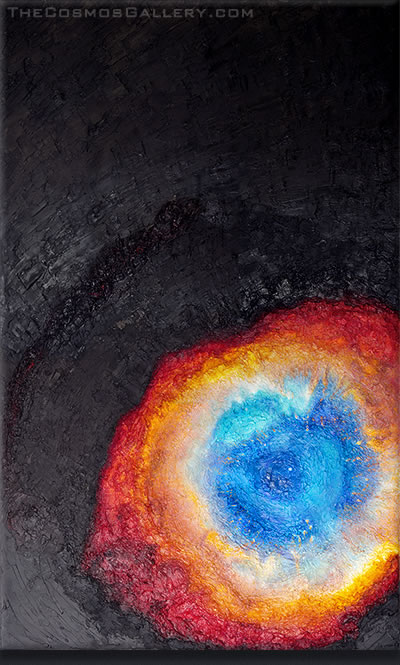Right in the middle of this vibrant glow, there is a dying star that won't fade away without putting on a last show.
We are looking at a planetary nebula , and such spectacle of colors will most likely be the ultimate fate of our sun in about 5 billion years. In fact almost all stars in our galaxy, with a mass similar to our sun, will become planetary nebulas.
Click below to learn about the cometary knots on The Helix nebula, as well as it's composition and structure.
When a star like our sun depletes it's supply of fuel, it will expand and shine a thousand times brighter, becoming a red giant. As it continues to burn its remaining fuel, it will shed out its outer layers, illuminating the surrounding material that creates the light show we see here. The star will continue approaching the end of it's life becoming a white dwarf.
On November of 2002, during the Leonid meteor storm, The Hubble space telescope was turned around to protect it's precise mirror. The Helix Nebula happens to be located on that direction, and the opportunity was used to photograph it through nine orbits around earth. This painting is based on that image by Hubble.
I clearly remember the Leonid meteor shower of 2002. We went to a beautiful park, faced the sky next to the sundial, and proceeded to count about a hundred bright leonids within the first hour alone. When I look at this painting, I think of that night.
